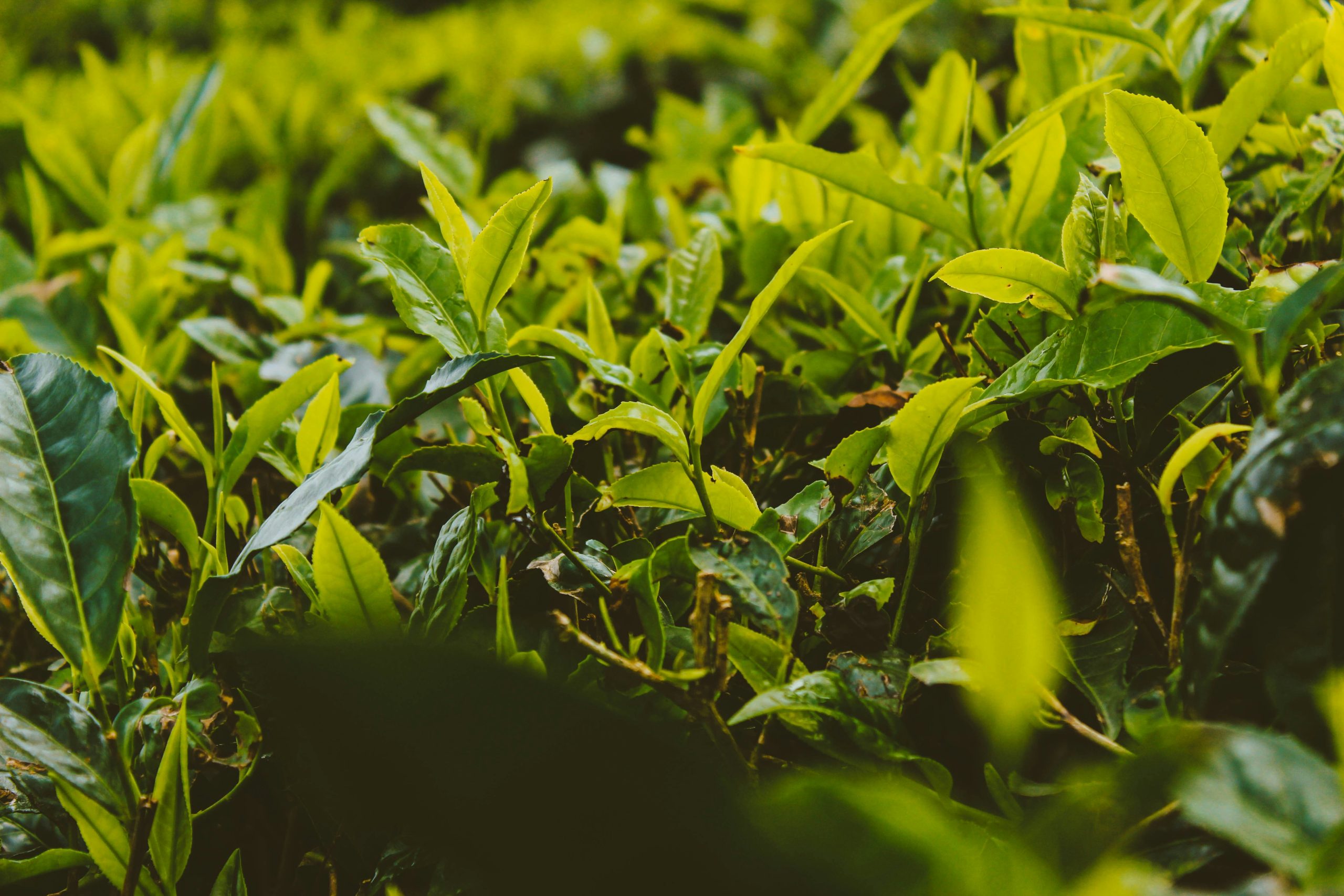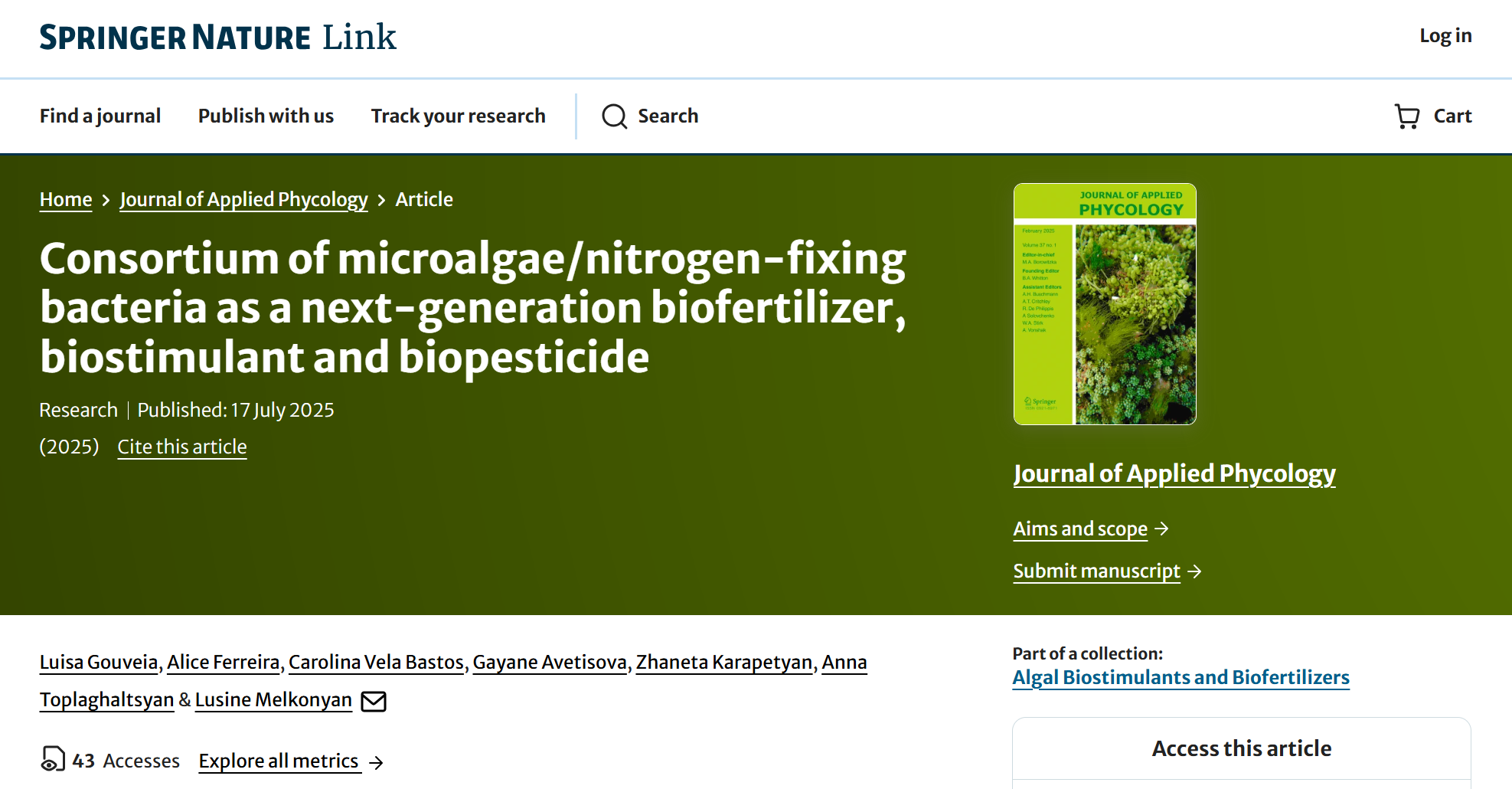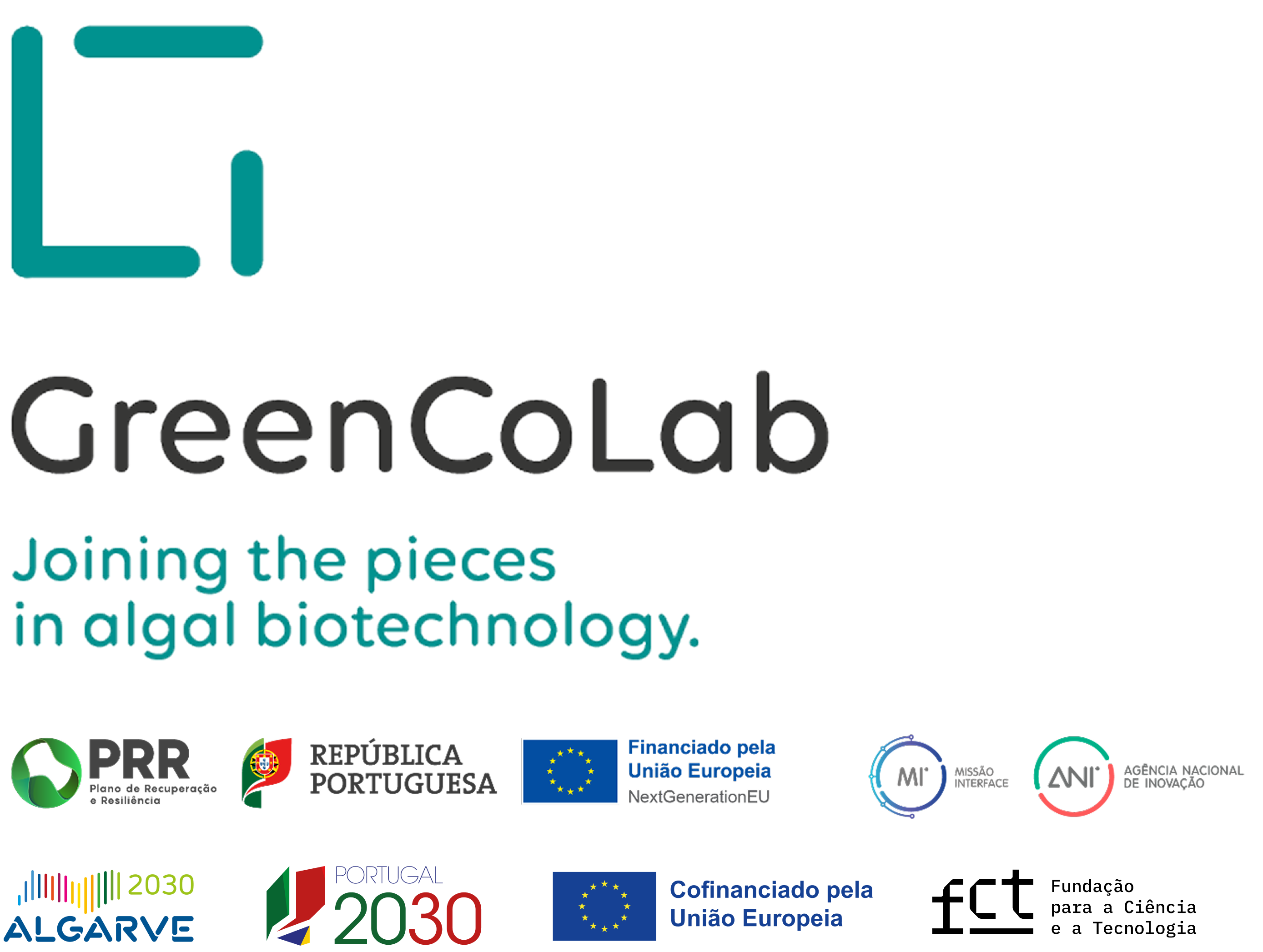

TITLE
Consortium of microalgae/nitrogen-fixing bacteria as a next-generation biofertilizer, biostimulant and biopesticide
JOURNAL
Applied Phycology
AUTHORS
Luisa Gouveia, Alice Ferreira, Carolina Vela Bastos, Gayane Avetisova, Zhaneta Karapetyan, Anna Toplaghaltsyan & Lusine Melkonyan
ABSTRACT
This study aims to provide insights into a new consortium of a microalga, twelve nitrogen-fixing (N-fixing) bacteria and a cyanobacterium. The microalga Tetradesmus obliquus (T), in conjunction with various N-fixing bacteria and the cyanobacterium Synechocystis sp. PCC 6803 (S), the N-fixing bacterium Sphingobacterium sp. L13G8 (5), cultivated in complete Bristol medium and in Bristol-NaNO3 free conditions, were examined. The study encompassed the analysis of their consortia, including evaluation of their growth, and potential as a biostimulant, biofertilizer and biopesticide, and assessed for sedimentation performance for targeted applications. The T and N-fixing bacteria consortia had higher growth in Bristol NaNO3-free media. The triple culture TS5 had the highest growth parameter (2.4 OD540) in the same medium, followed by T5. The consortia were employed to ascertain the efficacy of their biostimulants and biofertilizers on watercress (Lepidium sativum) and to determine the potency of their biopesticides against the fungal pathogens Fusarium oxysporum and Rhizoctonia solani (in certain consortia). Consortium T5 demonstrated the most significant impact on the seeds germination index (212.7%) and root length (6.0 cm) of L. sativum. The same consortium had a significant impact on the shoot length (4.4 cm) of L. sativum. Among all consortia that were examined, T5 exhibited significant inhibitory effects on the growth of F. oxysporum (60.6%) and R. solani (69.2%). In the same consortium, the rate of microalgal biomass sedimentation was enhanced by the N-fixing bacterium (0.4 cm h−1). Consortium T5 was the most effective in relation to growth and biomass sedimentation efficiency, in addition to its use as a biostimulant, biofertilizer and biopesticide. The created combination of microalga and N-fixing bacterium represents significant progress in the field of microalga cultivation, with notable benefits including improved biomass sedimentation and enhanced agricultural practices, as well as environmental friendliness and safety.



